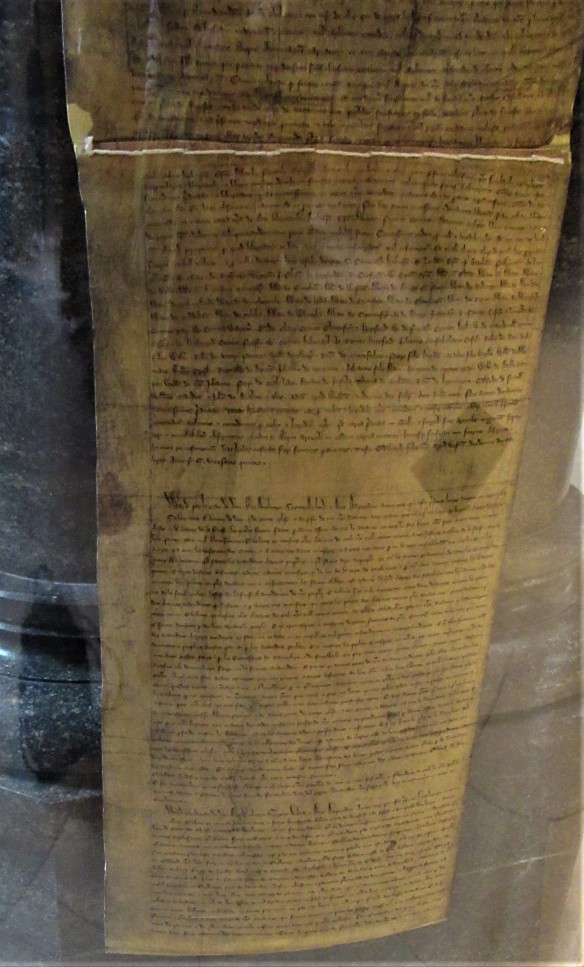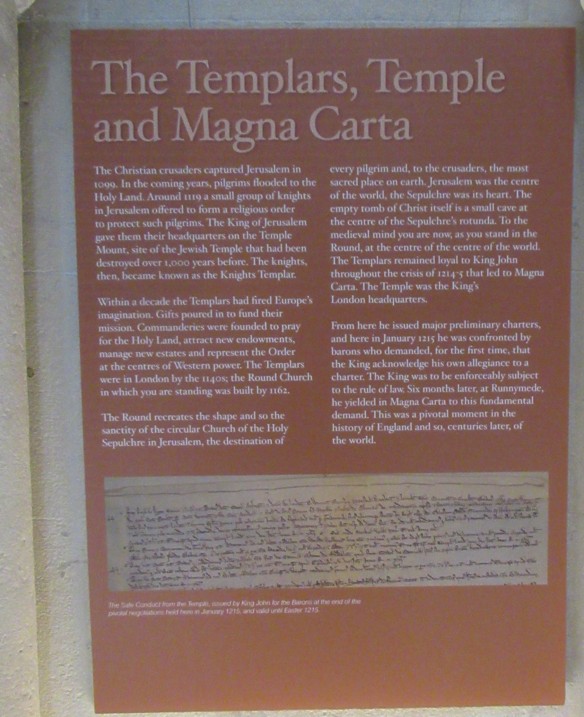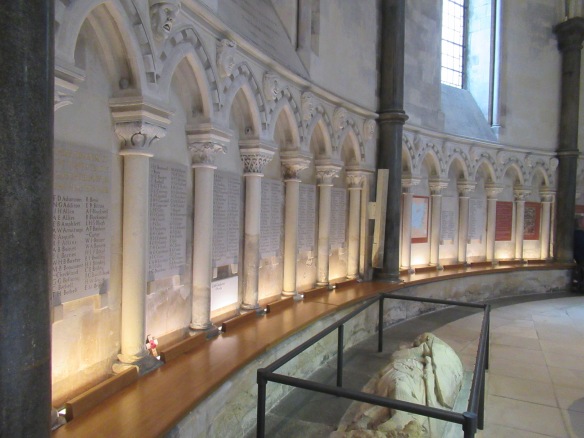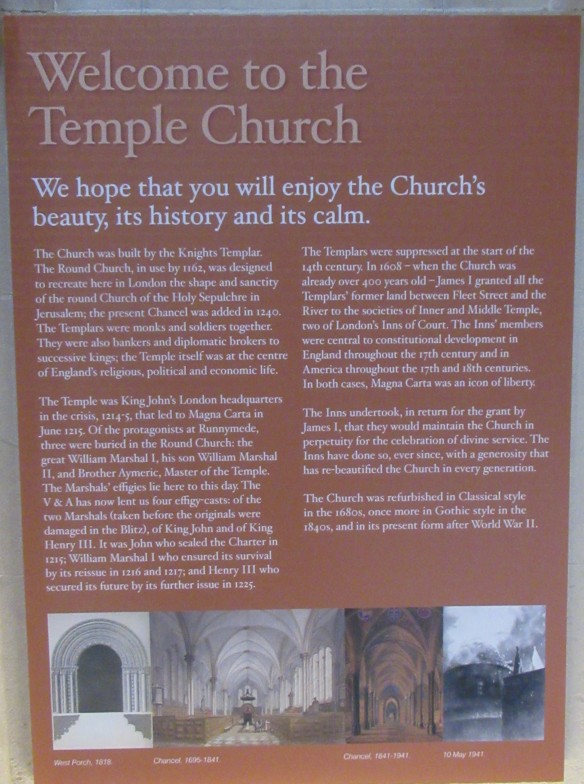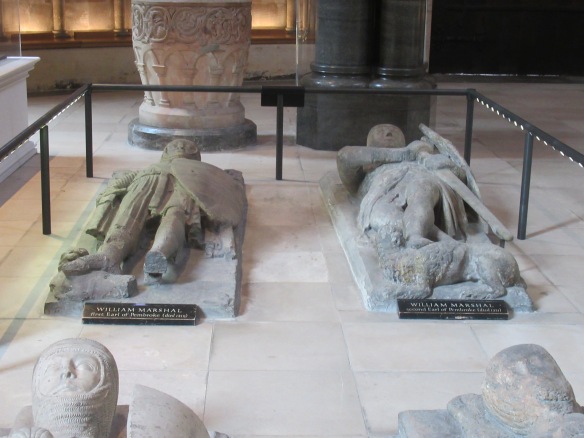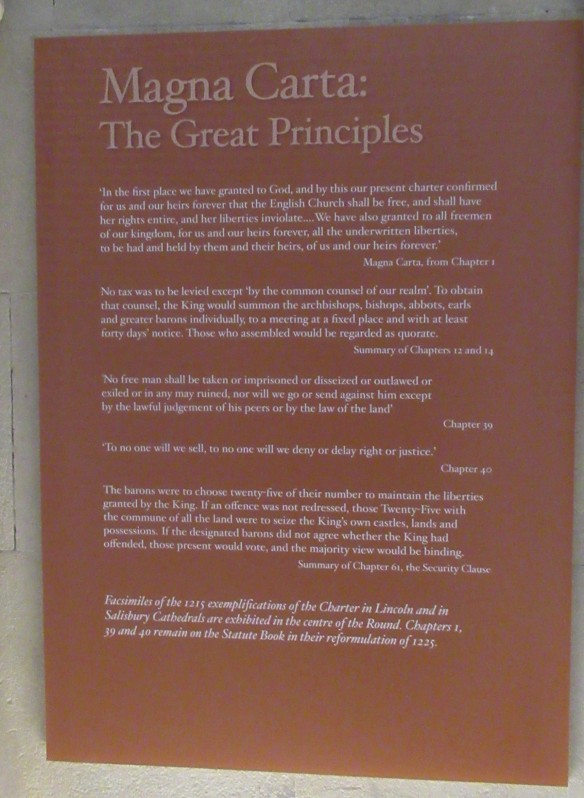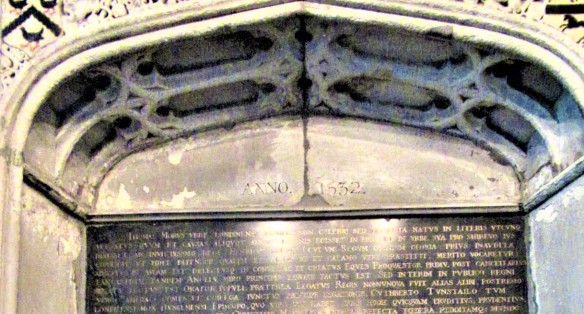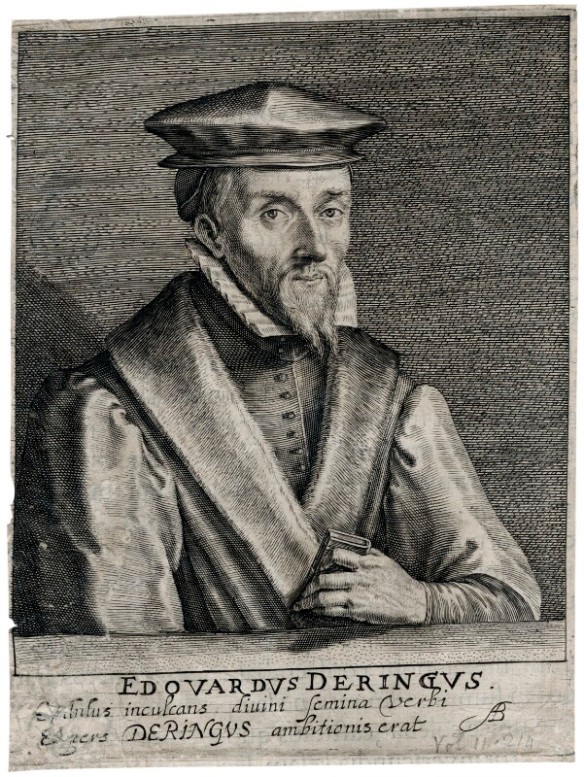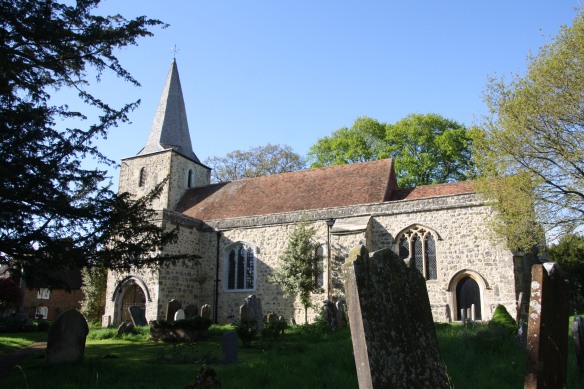The FitzAlan Arundel’s feature in various locations in Daniel Dering Mathew’s tree and it can get confusing.
Alan Fitz Flaad is considered “the progenitor of the FitzAlan family, the Earls of Arundel (1267–1580), and the House of Stuart“ – Wikipedia article
FitzAlan Oswestry Earls of Arundel Line
Alan Fitz Flaad – Avelina de Hesdin, daughter of Ernulf de Hesdin
- William FitzAlan Lord of Oswestry (1105 – 1160) first son – Christiana
- William FitzAlan 1st Lord of Clun and Oswestry – daughter of Hugh de Lacy, Lord of Meath
- William FitzAlan 2nd Lord of Clun and Oswestry – Mary Erington, the daughter of Thomas
- John FitzAlan 3rd Lord of Clun and Oswestry (1200 – 1240) – Isabel d’Aubigny, daughter of William d’Aubigny, 3rd Earl of Arundel and Mabel of Chester,
- John FitzAlan (1223 – 1267) Lord of Oswestry, Clun, and Arundel – Maud de Verdon, daughter of Theobald le Botiller (Boteler) by his wife Rohesia de Verdon
- John FitzAlan (1246 – 1272 ) Lord of Arundel – Isabella Mortimer (died 1292), daughter of Roger Mortimer, 1st Baron Mortimer and Maud de Braose in 1260
- Richard FitzAlan (1267 – 1302) 1st Earl of Arundel – Alice of Saluzzo (also known as Alesia di Saluzzo), daughter of Thomas I of Saluzzo in Italy
- Edmund (1285 – 1326 ) 2nd Earl of Arundel – Alice de Warenne
- Richard FitzAlan 3rd Earl Arundel (1306 – 1376) – Isabel le Despenser & Eleanor of Lancaster daughter of Henry 3rd Earl of Lancaster son of Edmund Crouchback Lancaster son of Henry III Plantagenet and Eleanor of Provence
- Richard FitzAlan 4th Earl Arundel (1346 – 1397) – Elizabeth de Bohun
- Lady Elizabeth FitzAlan Arundel (1374 – 1425) – Thomas Mowbray, 1st Duke of Norfolk
- Lady Margaret de Mowbray – Sir Robert Howard
- Sir John Howard – Katherine Molines
- Thomas Howard – Elizabeth Tilney
- Lady Elizabeth Howard – Sir Thomas Boleyn
- Lady Mary Boleyn – Sir William Carey
- Henry Carey
- Catherine Carey (1524 – 1569), (some claim her father was Henry VIII) – 1, – married Francis Knollys (1511- 1596) – 1,
- Lady Mary Boleyn – Sir William Carey
- Lady Elizabeth Howard – Sir Thomas Boleyn
- Thomas Howard – Elizabeth Tilney
- Sir John Howard – Katherine Molines
- Lady Margaret de Mowbray – Sir Robert Howard
- Lady Joan FitzAlan Arundel (1375 – 1435) – William de Beauchamp
- Lady Joan de Beauchamp – James Butler 4th Earl of Ormond
- Thomas Butler 7th Earl of Ormond – Lady Ann Hankford
- Margaret Butler – William Boleyn
- Sir Thomas Boleyn – Lady Elizabeth Howard
- Lady Mary Boleyn – Sir William Carey
- Henry Carey
- Catherine Carey (1524 – 1569), (some claim her father was Henry VIII) – 1, – married Francis Knollys (1511- 1596) – 1,
- Lady Mary Boleyn – Sir William Carey
- Sir Thomas Boleyn – Lady Elizabeth Howard
- Margaret Butler – William Boleyn
- Thomas Butler 7th Earl of Ormond – Lady Ann Hankford
- Lady Joan de Beauchamp – James Butler 4th Earl of Ormond
- Lady Elizabeth FitzAlan Arundel (1374 – 1425) – Thomas Mowbray, 1st Duke of Norfolk
- Richard FitzAlan 4th Earl Arundel (1346 – 1397) – Elizabeth de Bohun
- Richard FitzAlan 3rd Earl Arundel (1306 – 1376) – Isabel le Despenser & Eleanor of Lancaster daughter of Henry 3rd Earl of Lancaster son of Edmund Crouchback Lancaster son of Henry III Plantagenet and Eleanor of Provence
- Edmund (1285 – 1326 ) 2nd Earl of Arundel – Alice de Warenne
- Richard FitzAlan (1267 – 1302) 1st Earl of Arundel – Alice of Saluzzo (also known as Alesia di Saluzzo), daughter of Thomas I of Saluzzo in Italy
- John FitzAlan (1246 – 1272 ) Lord of Arundel – Isabella Mortimer (died 1292), daughter of Roger Mortimer, 1st Baron Mortimer and Maud de Braose in 1260
- John FitzAlan (1223 – 1267) Lord of Oswestry, Clun, and Arundel – Maud de Verdon, daughter of Theobald le Botiller (Boteler) by his wife Rohesia de Verdon
- William FitzAlan 1st Lord of Clun and Oswestry – daughter of Hugh de Lacy, Lord of Meath
Catherine Carey (1524 – 1569), (some claim her father was Henry VIII) – 1, – married Francis Knollys (1511- 1596) – 1,
- Richard Knollys (1548 – 1596) – Joan Heighham – Winchcombe (1549 – 1631)
- Francis Knollys – Alice Beecher (she later married Henry Hunkes)
- Dorothy Knollys (1633 Stanford in the Vale Berkshire – after 1670). William’s diaries – 1, ; (see Lack Family website), 1, – William Byam (1621 Luccombe/Luckham Somerset – 1670 Antigua Leeward Islands West Indies)
- Willoughby Byam
- Edward Byam (1661 Surinam – 1741 Antigua Leeward Islands West Indies) – Lydia Thomas (1670 – 1744 Antigua Leeward Islands West Indies)
- George Byam (1704 St John’s Antigua – Barbuda – 1734 St Georges Parish Antigua – Barbuda) Henrietta Maria Frye (1703 Antigua West Indies – 1796 Kelvedon Essex)
- George Byam married Louisa Bathurst
- George Byam
- Selina Byam married Reverend William Hony
- Elizabeth Byam married Mark Batt
- Louisa Byam
- Henrietta Maria Byam
- John Byam
- Mary Byam (1730 Antigua West Indies – 1814 Felix Hall Kelvedon West Essex) – Daniel Mathew (1715 – 1777) of Felix Hall Kelvedon West Essex – 1, 2,
- Daniel Byam Mathew (1756 London – 1838 St Kitts West Indies ) – Elizabeth Dering (1765 – 1812) – 1, 2,
- Daniel Dering Mathew (1787 Essex – 1856 St Leonards Sydney Australia) “bed partner?” to his servant Bridget Ann Oliver (1800 – 1885) – 1,
- Daniel Byam Mathew (1756 London – 1838 St Kitts West Indies ) – Elizabeth Dering (1765 – 1812) – 1, 2,
- George Byam married Louisa Bathurst
- George Byam (1704 St John’s Antigua – Barbuda – 1734 St Georges Parish Antigua – Barbuda) Henrietta Maria Frye (1703 Antigua West Indies – 1796 Kelvedon Essex)
- Dorothy Knollys (1633 Stanford in the Vale Berkshire – after 1670). William’s diaries – 1, ; (see Lack Family website), 1, – William Byam (1621 Luccombe/Luckham Somerset – 1670 Antigua Leeward Islands West Indies)
- Francis Knollys – Alice Beecher (she later married Henry Hunkes)
Scottish – FitzAlan Arundel Oswestry de Bohun Connections – Alpin Dunkeld generations
Alpin mac Echdach – d. 834 – a legendary or maybe historic figure ? – Wikipedia – was a supposed king of Dál Riata, an ancient kingdom that included parts of Ireland and Scotland
- Kenneth I MacAlpin – King of Picts : 810 – 858 – House of Alpin
- Constantine – Causantine mac Cineada – King of Picts : d. 877
- Donald II Scotland ( – 900)
- Malcom I Scotland ( – 954)
- Kenneth II Scotland ( – 995)
- Malcom II Scotland aka Máel Coluim mac Cináeda (954 – 1034)
- Bethoc Alpin m. Crinan Dunkeld
- Duncan I Scotland (1001 – 1040)
- Malcolm III Scotland (1031 – 1093) – Margaret of Wessex – Margaret of Scotland descended from Alfred the Great and daughter of Edward Ætheling. granddaughter of King Edmund Ironside and of Ealdgyth, great granddaughter of Æthelred the Unready and his first wife, Ælfgifu of York
- Duncan I Scotland (1001 – 1040)
- Bethoc Alpin m. Crinan Dunkeld
- Malcom II Scotland aka Máel Coluim mac Cináeda (954 – 1034)
- Kenneth II Scotland ( – 995)
- Malcom I Scotland ( – 954)
- Donald II Scotland ( – 900)
- Constantine – Causantine mac Cineada – King of Picts : d. 877
Malcolm III Scotland married St Margaret of Scotland (descendant of Alfred the Great)
- David I Scotland – (brother of Matilda of Scotland (wife of Henry I England), Edgar I, Alexander I and half brother of Duncan II) – Maud, Countess of Huntingdon a descendant of Alfred the Great. Later would come the times of The Great Cause in 1291 – 1292 – which generations would see David I’s descendant Robert I The Bruce as King of Scotland and Robert I’s descendants – the Stuart Kings and Queen of Scotland.
- Henry Earl of Huntingdon – Ada de Warenne daughter of William de Warenne, 2nd Earl of Surrey by Elizabeth of Vermandois, and a great-granddaughter of Henry I of France
- Margaret of Huntingdon – Humphrey de Bohun ( 1144 – 1181)
- Henry de Bohun 1st Earl Hereford (1176 – 1220) – son of Margaret of Huntingdon – Maud de Mandeville (alias Maud FitzGeoffrey), daughter and heiress of Geoffrey Fitz Peter, 1st Earl of Essex, of Pleshy Castle in Essex, daughter of Strongbow – Richard de Clare, 2nd Earl of Pembroke.
- Humphrey de Bohun 2nd Earl Hereford (1204 – 1275) – Maud de Lusignan (c.1210 – 14 August 1241)
- Humphrey de Bohun (- 1265) – Eleanor de Braose (1228 – 1251) daughter of Eva Marshal and granddaughter of William Marshal and Isabel de Clare, daughter of Strongbow – Richard de Clare, 2nd Earl of Pembroke.
- Humphrey de Bohun 3rd Earl Hereford (1249 – 1298) – Maud de Fiennes
- Humphrey de Bohun 4th Earl Hereford (1276 – 1322) – Lady Elizabeth Plantagenet (1282 – 1360) daughter of Edward 1 Plantagenet
- Lady Alianore Eleanor de Bohun (1304 – 1363) – James Butler 1st Earl of Ormonde
- John de Bohun 5th Earl Hereford
- Humphrey de Bohun 6th Earl Hereford
- William de Bohun (1312 – 1360) – Elizabeth Badlesmere – 3 x great granddaughter of William Marshal and Isobel de Clare via their daughter Isabel Marshal
- Humphrey de Bohun 7th Earl of Hereford – Joan FitzAlan Arundel
- Humphrey de Bohun 4th Earl Hereford (1276 – 1322) – Lady Elizabeth Plantagenet (1282 – 1360) daughter of Edward 1 Plantagenet
- Humphrey de Bohun 3rd Earl Hereford (1249 – 1298) – Maud de Fiennes
- Humphrey de Bohun (- 1265) – Eleanor de Braose (1228 – 1251) daughter of Eva Marshal and granddaughter of William Marshal and Isabel de Clare, daughter of Strongbow – Richard de Clare, 2nd Earl of Pembroke.
-
-
-
-
- Elizabeth de Bohun (1350 – 1385) – Richard FitzAlan 4th Arundel (1346 – 1397) son of Richard FitzAlan 3rd Earl Arundel and Eleanor of Lancaster
-
-
-
- Humphrey de Bohun 2nd Earl Hereford (1204 – 1275) – Maud de Lusignan (c.1210 – 14 August 1241)
- Henry de Bohun 1st Earl Hereford (1176 – 1220) – son of Margaret of Huntingdon – Maud de Mandeville (alias Maud FitzGeoffrey), daughter and heiress of Geoffrey Fitz Peter, 1st Earl of Essex, of Pleshy Castle in Essex, daughter of Strongbow – Richard de Clare, 2nd Earl of Pembroke.
- Margaret of Huntingdon – Humphrey de Bohun ( 1144 – 1181)
- Henry Earl of Huntingdon – Ada de Warenne daughter of William de Warenne, 2nd Earl of Surrey by Elizabeth of Vermandois, and a great-granddaughter of Henry I of France
Scottish FitzAlan Steward House of Stewart Line
Alan Fitz Flaad – Avelina de Hesdin, daughter of Ernulf de Hesdin
- Walter FitzAlan, second son and 1st hereditary High Steward of Scotland, and ancestor of the Stewart Kings of Scotland.- Eschina de Londres
- Alan FitzWater 2nd High Steward of Scotland – Alesta, daughter of Morggán, Earl of Mar
- Walter Stewart 3rd High Steward of Scotland- Bethóc, daughter of Gille Críst, Earl of Angus by his wife, Marjorie, youngest daughter of Henry of Scotland, 3rd Earl of Huntingdon and his wife, Ada de Warenne.
- Alexander Stewart 4th High Steward of Scotland – Jean Macrory, heiress of the Isles of Bute and Arran, daughter of James (d.1210)
- James Stewart 5th High Steward of Scotland – Egidia, a daughter of the Irish nobleman Walter de Burgh, 1st Earl of Ulster
- Walter Stewart 6th High Steward married Marjory Bruce daughter of Robert 1 The Bruce
- Robert II Scotland – Elizabeth Mure (died 1355), daughter of Sir Adam Mure of Rowallan
- Robert III Scotland – Anabella Drummond,
- James I – Joan Beaufort, daughter of John Beaufort, 1st Earl of Somerset (son of John of Gaunt and Katherine Swinford) and Margaret Holland. (granddaughter of Alice FitzAlan who was daughter of Richard FitzAlan 3rd / 10th Earl of Arundel and Eleanor of Lancaster – this links the William FitzAlan and Walter FitzAlan lines of Alan Fitz Flaad
- James II – Mary of Guelders
- James III – Margaret of Denmark
- James IV Scotland – Margaret Tudor sister of Henry VIII and daughter of Henry VII England – son of Margaret Beaufort who was a great granddaughter of John of Gaunt)
- James III – Margaret of Denmark
- James II – Mary of Guelders
- James I – Joan Beaufort, daughter of John Beaufort, 1st Earl of Somerset (son of John of Gaunt and Katherine Swinford) and Margaret Holland. (granddaughter of Alice FitzAlan who was daughter of Richard FitzAlan 3rd / 10th Earl of Arundel and Eleanor of Lancaster – this links the William FitzAlan and Walter FitzAlan lines of Alan Fitz Flaad
- Robert III Scotland – Anabella Drummond,
- Robert II Scotland – Elizabeth Mure (died 1355), daughter of Sir Adam Mure of Rowallan
- Walter Stewart 6th High Steward married Marjory Bruce daughter of Robert 1 The Bruce
- James Stewart 5th High Steward of Scotland – Egidia, a daughter of the Irish nobleman Walter de Burgh, 1st Earl of Ulster
- Alexander Stewart 4th High Steward of Scotland – Jean Macrory, heiress of the Isles of Bute and Arran, daughter of James (d.1210)
- Walter Stewart 3rd High Steward of Scotland- Bethóc, daughter of Gille Críst, Earl of Angus by his wife, Marjorie, youngest daughter of Henry of Scotland, 3rd Earl of Huntingdon and his wife, Ada de Warenne.
- Alan FitzWater 2nd High Steward of Scotland – Alesta, daughter of Morggán, Earl of Mar
James IV Scotland (1473 – 1513) and Margaret Tudor sister of Henry VIII and daughter of Henry VII England – son of Margaret Beaufort who was a great granddaughter of John of Gaunt)
- James V Scotland (1512 – 1543) – Marie of Guise
- Mary I Scotland (1542- 1587) – Henry Stuart Lord Darnley – son of Matthew Stewart, 4th Earl of Lennox & Lady Margaret Douglas – daughter of Archibald Douglas, 6th Earl of Angus, and Lady Margaret Tudor, daughter of King Henry VII of England and widow of King James IV of Scotland.
- James VI Scotland and I England (1566 – 1625) – heir of Elizabeth I of England – Anne of Denmark
- Charles I England (1600 – 1649) – Henrietta Maria of France
- Charles II (1630 – 1685) – Catherine of Braganza
- James VII Scotland and II England (1633 – 1701) – Anne Hyde and Mary of Modena
- James Francis Edward Stewart (1688 – 1766) – The Old Pretender – son of Mary of Modena
- Charles Edward Stewart– Bonnie Prince Charlie (1720 – 1788) – The Young Pretender
- Mary – daughter of Anne Hyde – William III of Orange
- Anne – daughter of Anne Hyde – Prince George of Denmark
- James Francis Edward Stewart (1688 – 1766) – The Old Pretender – son of Mary of Modena
- Mary of Orange – William II, Prince of Orange
- William III of Orange – Mary
- Charles I England (1600 – 1649) – Henrietta Maria of France
- Elizabeth Stuart of Bohemia –Frederick V Elector Palatine
-
- Sophia, Electress of Hanover (14 October 1630 – 8 June 1714) – Ernest Augustus, Elector of Hanover
-
- James VI Scotland and I England (1566 – 1625) – heir of Elizabeth I of England – Anne of Denmark
- Mary I Scotland (1542- 1587) – Henry Stuart Lord Darnley – son of Matthew Stewart, 4th Earl of Lennox & Lady Margaret Douglas – daughter of Archibald Douglas, 6th Earl of Angus, and Lady Margaret Tudor, daughter of King Henry VII of England and widow of King James IV of Scotland.
Note – In Daniel Dering Mathew’s tree there is also Robert Monckton Arundell Viscount Galway (1758 – 1810) who married Elizabeth Eliza Mathew (1759 – 1801). Robert was the son of William Monckton-Arundell, 2nd Viscount Galway who inherited estates from his maternal aunt, Lady Frances Arundell of Allerton Mauleverer. He adopted the additional surname of Arundell in accordance with the terms of his aunt’s will. She was formerly Lady Frances Manners, the daughter of John Manners, 2nd Duke of Rutland and she had married the Honourable Richard Arundell (c. 1696 – 20 January 1758). They had died childless, so William Monckton-Arundell, 2nd Viscount Galway was not a blood relative of the Honourable Richard Arundell (c. 1696 – 20 January 1758). There does not appear to be a connection between the family of Richard Arundell (c. 1696 – 20 January 1758) and the FitzAlan Arundel descendants of Alan Fitz Flaad.



